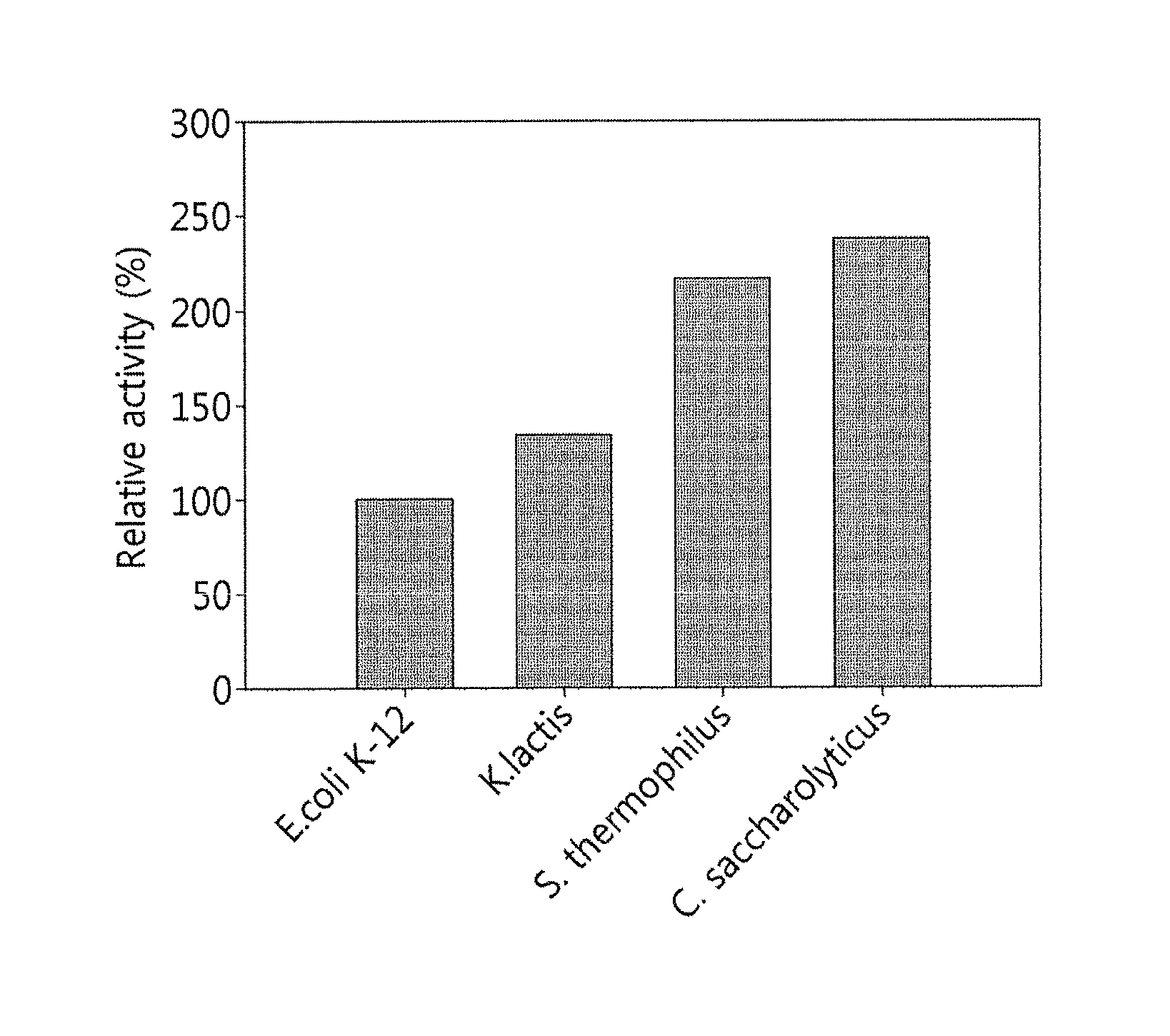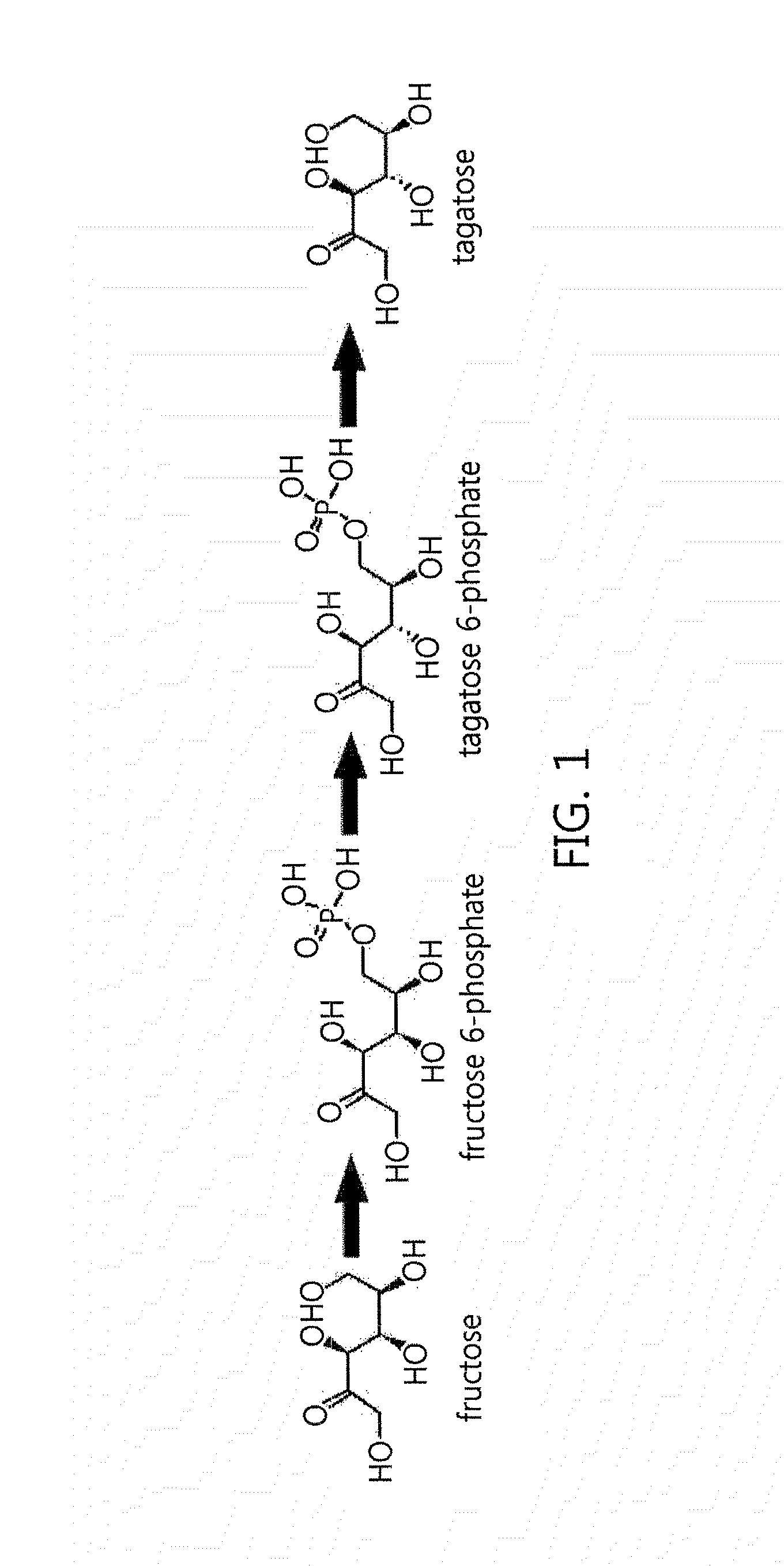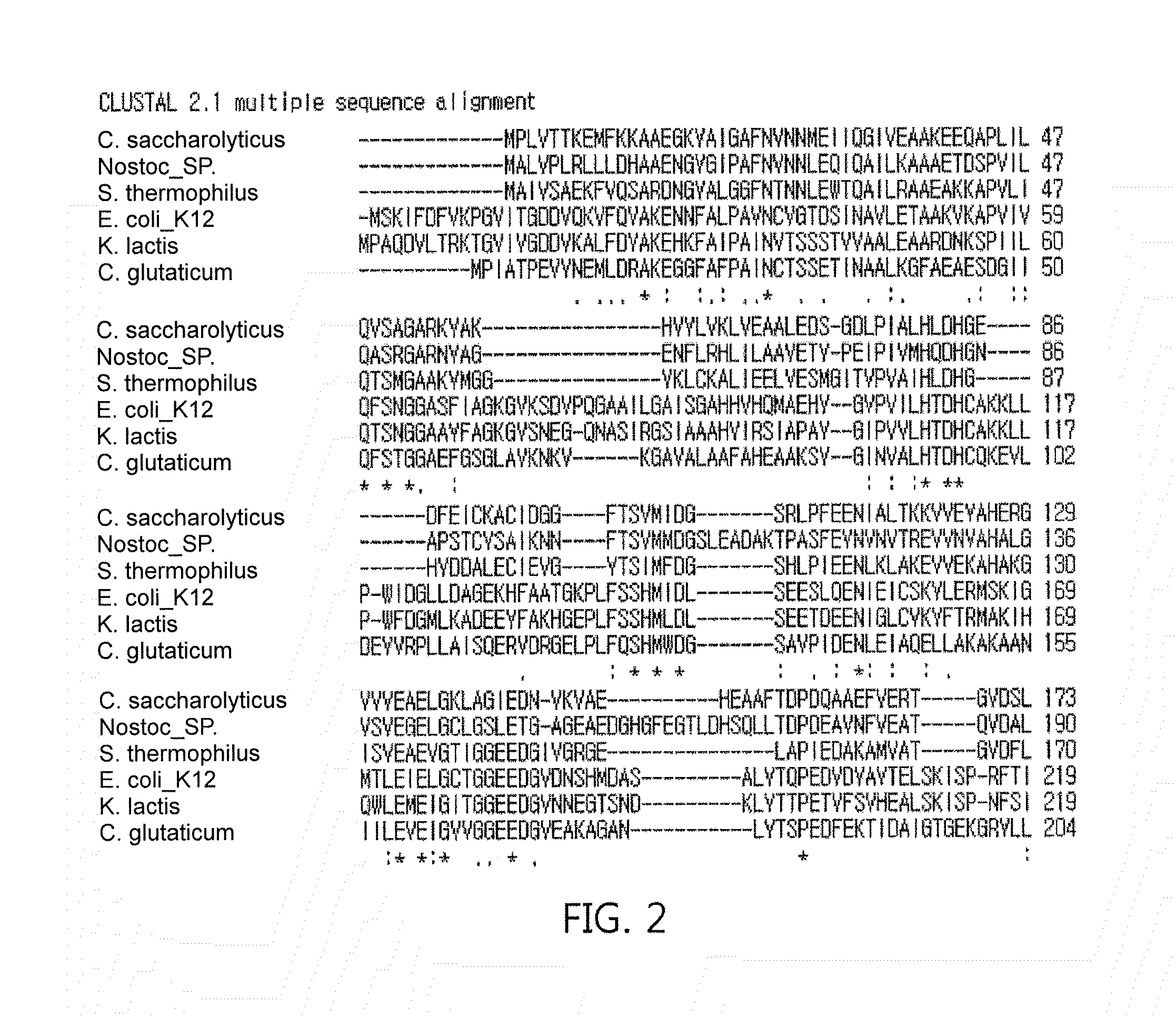Aldolase, aldolase mutant, and method and composition for producing tagatose by using same
- Summary
- Abstract
- Description
- Claims
- Application Information
AI Technical Summary
Benefits of technology
Problems solved by technology
Method used
Image
Examples
example 1
Large-Scale Production of Fructose 1,6-Diphosphate Aldolased Enzyme
[0070]Regarding fructose 1,6-diphosphate aldolase genes, DNA from Escherichia coli strain K-12, and each strain of Streptococcus thermophilus, Caldicellulosiruptor saccharolyticus, and Kluyveromyces lactis were suggested as genes for fructose 1,6-diphosphate aldolase, but they were obtained in a large scale by performing PCR amplification after designing primers (see Table 2) based on the nucleotide sequence of DNA of genes, which have never been identified, inserting the PCR product into an RSF Duet-1 vector [Novagen] using restriction enzymes Sal I and Not I to construct a recombinant vector, RSF Duet-1 / fructose 1,6-diphosphate aldolase, followed by transforming the recombinant vector into E. coli BL21(DE3) by a conventional transformation method. Additionally, the E. coli BL21 strain was stored in liquid nitrogen prior to cultivation for a large-scale production.
[0071]Then, for a large-scale production of fructose...
example 2
Purification of Fructose 1,6-Diphosphate Aldolase
[0072]In order to accurately identify the characteristics of fructose 1,6-diphosphate aldolase, the enzyme was purified using affinity HISTRAP® HP column, desalting HIPREP® 16 / 60, and gel filtration SEPHACRYL® S-100 HR column.
example 3
Metal Specificity of Fructose 1,6-Diphosphate Aldolase
[0073]According to previous reports, fructose 1,6-diphosphate aldolase is involved in the conversion of 1,6-diphosphate substrate into dihydroxyacetone phosphate and glyceraldehyde 3-phosphate by metal zinc and improved titer. However, this disclosure confirmed that a metal salt effect does not result in increased titer when fructose 6-phosphate was applied as a substrate. In order to examine the metal salt effect, the enzyme activity was measured after treating with EDTA or adding 1 mM metal ions, as illustrated in figures below, and, in particular, the reaction was performed in a 50-mM PIPES buffer solution (pH 8.5) including 0.15% fructose and 0.05 U / mL of the enzyme at 50° C. for 30 minutes, and the enzyme activity was measured after stopping the reaction with 0.2 M HCl.
[0074]As a result, it was confirmed that the fructose 1,6-diphosphate aldolase of the disclosure exhibited no change in its activity by metal ions and, unlike...
PUM
 Login to View More
Login to View More Abstract
Description
Claims
Application Information
 Login to View More
Login to View More - R&D
- Intellectual Property
- Life Sciences
- Materials
- Tech Scout
- Unparalleled Data Quality
- Higher Quality Content
- 60% Fewer Hallucinations
Browse by: Latest US Patents, China's latest patents, Technical Efficacy Thesaurus, Application Domain, Technology Topic, Popular Technical Reports.
© 2025 PatSnap. All rights reserved.Legal|Privacy policy|Modern Slavery Act Transparency Statement|Sitemap|About US| Contact US: help@patsnap.com



